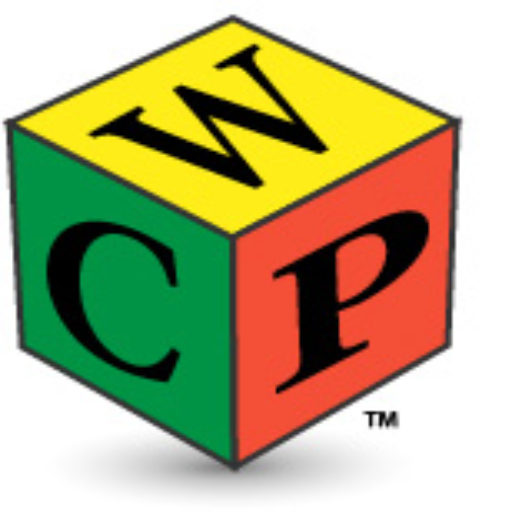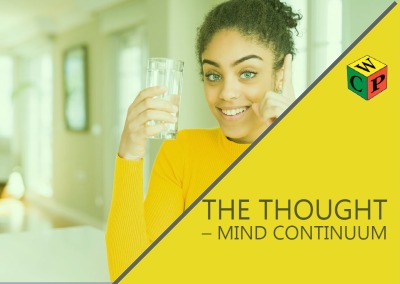In keeping with the recent topic of continuums, this is another entry in the self-awareness skill list. I read an amazing book several years ago called The Power of Now by Eckhart Tolle (see resources page.) It is simultaneously spot on, eye opening and sometimes mind-bendy. The most useful takeaway for me as a therapist was the importance of knowing ‘where’ you are spending the majority of your mind time.
Most of us if asked would confidently say that we spend the majority of our time thinking about whatever is going on in that given moment. That, however, is generally not at all accurate. Humans are capable of managing several different thought trains all at the same time while engaged in an activity that is not connected to any of them.
For example, let’s say I am folding laundry. If asked I would probably say that I am also thinking about folding laundry – ‘that needs to be smoothed, those black socks don’t match, there’s a grease stain on that t-shirt, can I get away with wearing it or should I treat it and rewash it now, remember to hang that shirt up inside out or it will get hanger-nipples on the shoulders’ etc. Yet if I pay close attention I will realize that in addition to that line of thinking I am also replaying a long ago upsetting conversation with my ex and I am mentally cleaning out the fridge and I am making a grocery list for tomorrow. For some, these may all be happening simultaneously (which creates a cacophony of thought noise in there). But for most of us they occur in rapid succession, one after another, all the while happily humming and folding clothes.
We often feel exhausted even when we have done very little. We also may feel anxious or depressed or both while not being able to put our finger on any major life event that has caused it. This has a lot to do with both the intensity of, and the content of, the subconscious mental gymnastics we put ourselves through all day long, day after day.
To assess the intensity of your mental gymnastics set aside fifteen minutes and pretend to meditate. I am not asking you to actually start a meditation practice. We will get to that later in our coping skill development. For now simply set aside fifteen minutes of your day, go somewhere quiet where you will not be disturbed and get comfy. There is no need to ‘assume the position’ or to have a mantra or to hold your fingers a certain way. Just take a few slow deep breaths, relax and attempt to clear your mind. When a thought occurs, acknowledge it, dismiss it and return to clear-mind. When you are finished, chart your experience on the following continuum:

The intensity of your thought-mind (how far to the right on the continuum you were) relates directly to mental exhaustion. That feeling of being oh so tired even when you have had a good night’s sleep and a relatively easy day. When we get into developing coping (doing) skills you will learn techniques to reduce this intensity of thought.
To assess the content of your mental gymnastics, set a timer to go off every thirty minutes throughout your day during waking hours for at least four days in a week. Make it a quiet alarm, a vibration on your phone, a little ‘ding’. Nothing that will startle you or others. Let this be a gentle reminder to pause for just a moment to ask yourself ‘what was I thinking just then?’ or ‘where was my thought-mind?’ and then ‘was there anything else?’. Then categorize these thoughts as to past, present or future. At the end of the day move the ‘sliders’ on the continuum below to show what amount or percentage of thought time you spent in each.

A day might look like this:

This would represent about 50% in the past, 20% in the present and 30% in the future. It varies wildly for different people. But one thing I can guarantee is that almost no one will find that they spend more than 20%-25% of their thought time in the present moment. Once you’ve done this for at least four days average your findings together into a single continuum. This should give you a reliable representation of the content your thought-mind spends its time on.
When it comes to content, your ideal would be 10% past, 80% present and 10% future. Most individuals only spend about 20% in the present moment and split the remaining 80% between the past and the future. When this is the case there is not much healthy thinking going on.
Past thought content at a high level represents depression and generally consists of ‘woulda-coulda-shoulda’ thinking. Going back to the past and wallowing in guilt and remorse; replaying old conversations and events; thinking of things you wish you had said either to smooth things over, get yourself out of trouble or to defeat the other person. It also includes victim-think of ‘if only this bad thing hadn’t happened to me’ or ‘if I had grown up with different opportunities. While there can be truth to all of this past thought content, spending copious amounts of time wallowing in it robs you of your present moment life.
Future thought content at a high level represents anxiety and generally consists of ‘what if, what if, what if’ thinking. Fretting over what might happen or what might not happen; worrying about events that may never come to pass; plotting and planning in an attempt to control, or force, a future outcome in your favor; freaking out over something you have no control over. I bonded with one of my closest long-term friends in 2001 over our mutual freak out about the bird flu which never became a big thing. Before that it was Y2K and its potential power grid collapse. While it is true that some bad things do come to pass, spending an excessive amount of time in ‘oh no, oh no, oh no’ mode robs you of your present moment life, too.
Getting a handle on your thought-mind process is simply an exercise in self-awareness and redirection. Again, set a quiet thirty-minute timer to chime throughout the day and just pause. Ask yourself if you are fully engaged in the present moment, the right-here-right-now of your life. Of course, we all have to think about the past or the future from time to time. While they are illusions and not ‘real places’ we do enjoy bringing forth pleasant memories from the past; and our goals and dreams and plans involve the future. But if it is more than that, then gently bring yourself back to the present. And while you’re working on content also treat yourself to some intensity reducing slow, deep breaths and thought clearing exhalations. Your body and your mind will love you for it.

